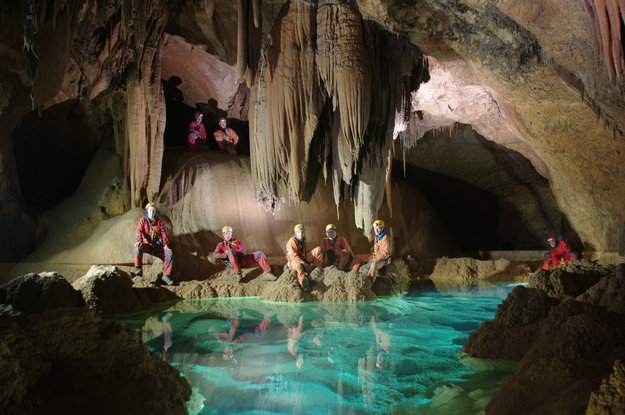This week sees the start of ESA’s next underground training course for astronauts. Six new and experienced astronauts from all over the world will work together to overcome the difficulties of working in a new environment performing a full scientific programme with limited supplies – similar to working on the International Space Station.
ESA astronaut Paolo Nespoli will be joined by Canadian astronaut Jeremy Hansen, Russian cosmonaut Aleksei Ovchinin, Japanese astronaut Satoshi Furukawa and NASA astronauts Mike Barratt and Jack Fischer on the six-day adventure underground.

The two-week CAVES course starts with five days learning the ropes and preparing to explore Earth’s subsurface. The astronauts will be taught how to explore dark uncharted areas, safely scale cave walls and move in three dimensions, run scientific experiments and prepare their mission supplies.
Then the astronauts will descend into the Sa Grutta caves on the island of Sardinia, Italy to spend six days underground. From their basecamp, the ‘cavenauts’ will explore and run experiments in complete darkness with only their helmet lamps for illumination.
Living and working with isolation and loneliness are factors to combat. Teamwork is key to a successful mission, and experts are on hand to offer advice and monitor progress.
In many ways, the cavenauts will be working in a more remote and hostile environment than the International Space Station. In an emergency, astronauts in space can return to Earth faster than the cavenauts can ascend to the surface.
The course aims to improve leadership, teamwork, decision-making and problem-solving skills in a multicultural environment. The cavenauts will look for life forms, test new technologies and study the underground weather, geology and environment, including measuring radiation and carbon dioxide levels.
During last year’s mission, the cavenauts returned with an unknown species. The newly discovered crustacean resembles a woodlouse and lives in water, a unique find for science.






